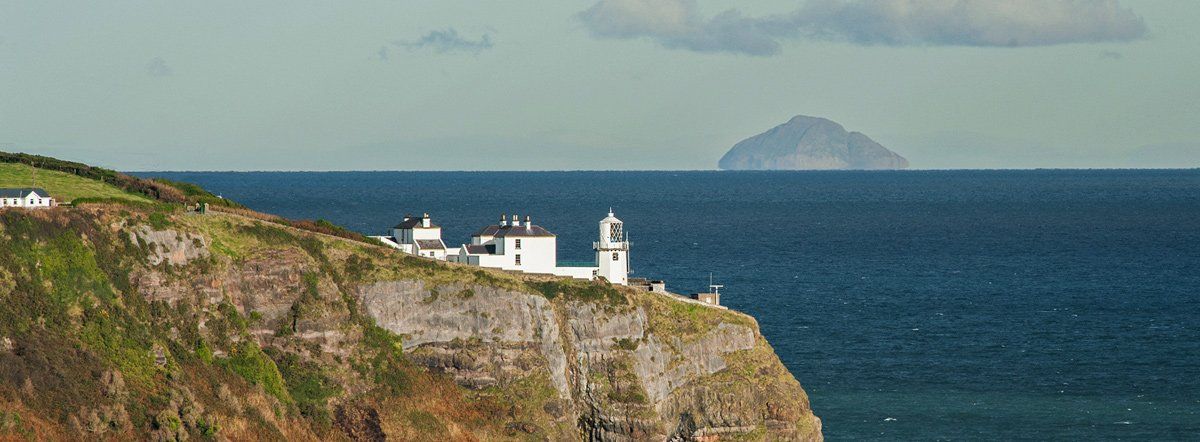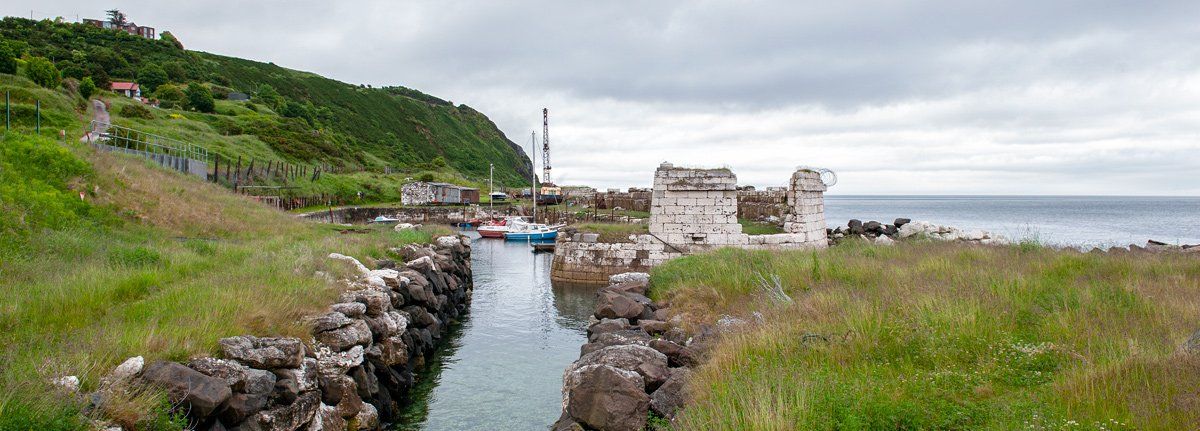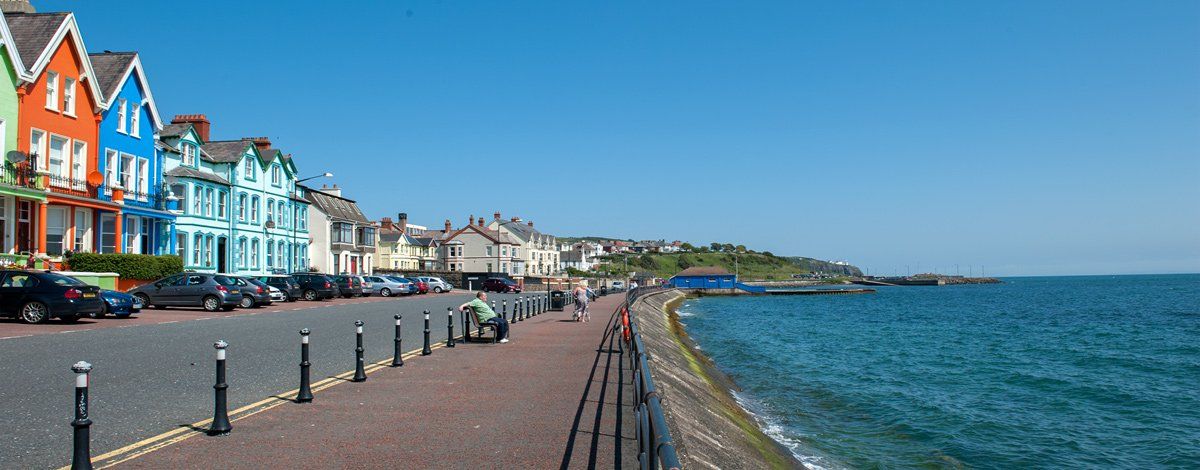Whitehead History
The area originally had two clachans (groups of cottages) Kinbane (White Head) and Knocknagullagh, the land here was acquired or rather granted to Arthur Chichester when he became governor of Carrickfergus circa 1599, replacing his brother who had been killed in a confrontation with James MacDonnell of Dunluce. He built the strategic castle keep for Sir Moyses Hill who was governer of Olderfleet (Larne), he had come to Ireland with the Earl of Essex in 1573 and was later appointed Provost of Ulster by Arthur Chichester, a manor house was also constructed. A collection of houses and a harbour developed around the castle which became know as Castle Chichester and later Chichester by the Sea, the clachans eventually merged into the foundation of Whitehead.
At one time a packet ship crossed between Castle Chichester and Scotland with mail and goods, the mail was then dispatched by smaller vessels to Belfast, this service was run by the Brice family who lived in the manor house adjacent to the castle. The limestone cliffs of the White headland was extensively quarried from the 1700s and also provided stone for the developing railway line from Belfast. Limestone was exported from the White Harbour, a natural tidal harbour and pier built in 1850, an exceptional location which is accessible by a path from the promenade.
Limestone exports continued to the end of the 1800s, the quarry eventually closing in 1920, today it provides a unique natural conservation habitat for wildlife, a pleasant walk from the town. Chichester by the Sea developed into a railway excursion resort through work by the Belfast & Northern Counties Railway Company under the guidance and vision of the General Manager Edward John Cotton and his Chief Engineer Berkeley Deane Wise. He designed and constructed the promenade, importing sand from Portrush by train to create the beach area. He took the path from the promenade along the shore to Black Head, then up the cliff with a loopback round to the shore complete with a tea room en route known as the Sunshine House.
Following on from this was the development of the famous Gobbins Cliff Walk. Chichester by the Sea became Whitehead (Kinbane) a prosperous and one of the premier seaside attraction in Ireland. One thing you might try and find if you are in Whitehead and that is a 'street'. All the roads end in every other name Close, Gardens, Avenue, Place, Lane, Drive and Crescent, everything but a street. This fact gave it the nickname of 'A Town without Streets'. The grandeur of Whitehead during its heyday as a premier seaside resort can still be seen today in the characteristic Edwardian and Victorian architecture, there are also two local golf courses one at Whitehead and the other at Bentra as well as a yacht club.
Whitehead also had the first military aviation facility in Ireland which operated at Bentra from 1915 to 1917 during the First World War. The Royal Naval Air Service operated airships from the base over the North Channel scouting for submarines which would wait for incoming convoys, they also protected the cross channel ferry service. The airships worked in liaison with naval boats based at Larne and was the first air/sea anti-submarine unit in Ireland, the airfield closed in 1920, at its peak four airships and different fixed-wing aircraft operated from the grass aerodrome.





